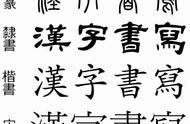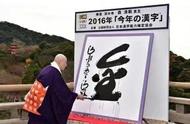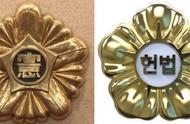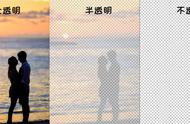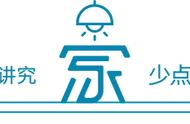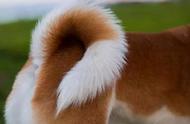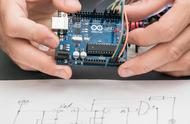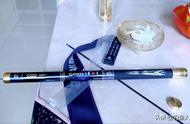中国网友何天赋的回答
From the perspective of a native Chinese, if a Chinese with ordinary education shows them a Japanese reading material, such as a newspaper, he/she can basically read a considerable part and guess the rest. Generally speaking, people can guess the meaning, which is not more difficult to understand than imagined.
从土生土长的中国人的角度来看,对于一个受过普通教育的中国人来说,如果向他们展示一份日本读物,比如报纸,他/她基本上可以阅读相当一部分,并猜出其余部分。一般来说,人们能够猜出其中的含义,并不比想象中的难以理解。

Chinese characters in Japanese originate from Chinese characters, and combine with hiragana and katakana to form a grammatical pattern, thus forming sentences. Chinese characters are comprehensive units of structure (combination of strokes), pronunciation and meaning, and there are no equivalent symbols such as hiragana or katakana in Chinese. Grammatically, these parts help to understand the meaning of different patterns or concepts (tense, voice, singular/plural, clause, masculine/feminine...), while Chinese is mainly based on context.
日语中的汉字源自汉字,与平假名和片假名结合,形成语法模式,从而形成语句。汉字是结构(笔画的组合)、发音和意义的综合单位,在汉语中没有平假名或片假名这样的等效符号。语法上,这些部分有助于理解不同模式或概念的含义(时态、语态、单数/复数、从句、阳性/阴性……),而汉语则主要基于上下文。
In modern Chinese, many characters have new meanings, while in modern Japanese, they (the same characters) may retain their original meanings. For example, in Chinese, Qi1 Zi3 (note the number of tones) represents wife, while in Japanese, SaiShi/TumaKo (the same character) represents wife and children. This makes the guessing part more difficult.
在现代汉语中,许多字符具有新的含义,而在现代日语中,它们(相同的字符)可能保留了以前的原始含义,例如,在汉语中,Qi1 Zi3(注意声调的数字)表示妻子,而在日语中,SaIShi/TumaKo(相同的字)表示妻子和孩子。这使得猜测部分更加困难。
There is another difficult part. Many Japanese words are written in Hiragana and Katakana, but there are also Chinese versions. But nowadays, Japanese native speakers may not be able to write the Chinese version because they use the simplified version too frequently or the Chinese version is relatively complex. But the tricky thing is that in Chinese, these words are introduced from Japanese, which uses the form of Chinese characters (there are no meaningless pure phonetic symbols in Chinese). For example, the word "CLUB" was first translated into the Japanese Chinese character KURABU (transliteration and meaning, which is a gathering place or alliance for people with the same hobby), and then translated into Chinese. However, in Japanese, katakana is still a formal form of expression, while the Chinese version may be rarely used or seen.
还有另一个困难的部分。许多日语单词用平假名和片假名书写,但也有汉字版本。但如今,以日语为母语的人可能无法书写汉字版本,因为他们太频繁地使用简化版,或者汉字版本相对复杂。但棘手的是,在汉语中,这些单词是从日语引入的,日语采用汉字(汉语中没有没有意义的纯语音符号)的形式。例如,CLUB一词首先被翻译成日语汉字KURABU(音译和意义,是有相同爱好的人的聚会场所或联盟),然后被翻译成汉语,但在日语中,片假名仍然是正式的表达形式,而汉字版本可能很少被使用或看到。
It may be interesting or confusing to guess the meaning of these words or expressions, but once you learn some basic rules, it will become much easier.
猜测这些单词或表达的含义可能很有趣或令人困惑,但一旦学会了一些基本规则,就会变得容易得多。
This can be compared with Persian speakers who read Arabic or other languages under the influence of Arabic. Many words seem similar, but the structure is completely different from other basic words.
这可以与在阿拉伯语影响下阅读阿拉伯语或其他语言时说波斯语的人相比,许多单词似乎相似,但结构和其他基本单词完全不同。

英国网友埃德文•莫兰的回答
Chinese characters are available in both traditional and simplified versions. Chinese Mainland has developed a simplified version to improve literacy. Traditional Chinese characters were borrowed by Japan when it created its own written language, so Chinese characters themselves are very familiar to Japanese.
汉字有繁体和简体两种版本。中国大陆开发了简化版,以提高识字率。传统的汉字是日本在创造自己的书面语言时借用的,所以汉字本身对日本人来说很熟悉。
Although Chinese characters look the same, this does not mean that Japanese can easily understand the meaning of sentences, because the languages are completely different. Chinese mainly uses monosyllabic words, because they may produce a large number of syllables when using tones, while Japanese mainly uses polysyllabic words, not depending on tones.
尽管汉字看起来相同,但这并不意味着日语能够很容易地理解句子的含义,因为语言完全不同。汉语主要使用单音节词,因为它们使用声调时可能会产生大量的音节,而日语则主要使用多音节词,不太依赖声调。
Therefore, Chinese can use a single character to represent words, while Japanese must create Japanese words by using the combination of two or more Chinese characters (the same way as English creates words from other languages such as tele scope), or create multi syllable words by using a single Chinese character and additional Japanese pinyin characters. In addition, the grammars of the two languages are completely different. Although the same characters are used, the basic spoken language is not even from the same language family.
因此,汉语可以使用单个字符来表示单词,而日语必须通过使用两个或多个汉字的组合来创建日语单词,(与英语从tele scope等其他语言创建单词的方式相同),或者通过使用单个汉字和附加的日语拼音字符来创建多音节单词。此外,这两种语言的语法也完全不同。尽管使用了相同的字符,但基本的口语甚至不是来自同一语系。
The Japanese will feel familiar when they look at traditional characters, but this does not mean that they will recognize all traditional characters. Chinese uses about 30000 characters, while Japanese only uses about 2000 of the most commonly used characters.
日本人在看繁体字时会有一种熟悉的感觉,但这并不意味着他会认出所有的繁体字。中文使用了大约30000个字符,而日语只借用了大约2000个最常用的字符。
With simplified characters, it will be more difficult for Japanese to read because many strokes have been deleted from Chinese characters. This undoubtedly makes learning to write easier, but for those who already know traditional characters, learning to simplify characters is an extra job.
有了简体字,日本人读起来会更加困难,因为很多笔画已经从汉字中删除了。这无疑使学习书写变得更容易,但对于已经了解繁体字的人来说,学习简化字是一项额外的工作。
I am not a native speaker of Japanese, but I can read very well. I did an experiment. I saw thousands of simplified Chinese cards and tried to guess the meaning of Chinese characters. I can guess about 30% of them.
我不是以日语为母语的人,但我读得很好。我做了一个实验,看了几千张简体中文卡片,试着猜出汉字的意思。我能猜出其中大约30%。
Even so, when visiting China, it is difficult to understand what is written on the sign. Sometimes I can do it, such as the "No Spitting" sign. (This happened many years ago, so I don't know whether they still have it.) In the restaurant, I can find out enough things, so I can order something edible. But this is not just because of Japanese; I also often eat in Chinese restaurants in Japan, where the menu has Chinese and Japanese.
即便如此,在访问中国时,很难弄清楚标牌上写的是什么。有时候我可以做到,比如“禁止吐痰”的标志。(这是很多年前的事了,所以我不知道他们是否还有。)在餐馆里,我能弄清楚足够的东西,所以可以点一些可食用的东西。但这不仅仅是因为懂日语;我也经常在日本的中餐馆吃饭,那里的菜单上有中文和日文。


